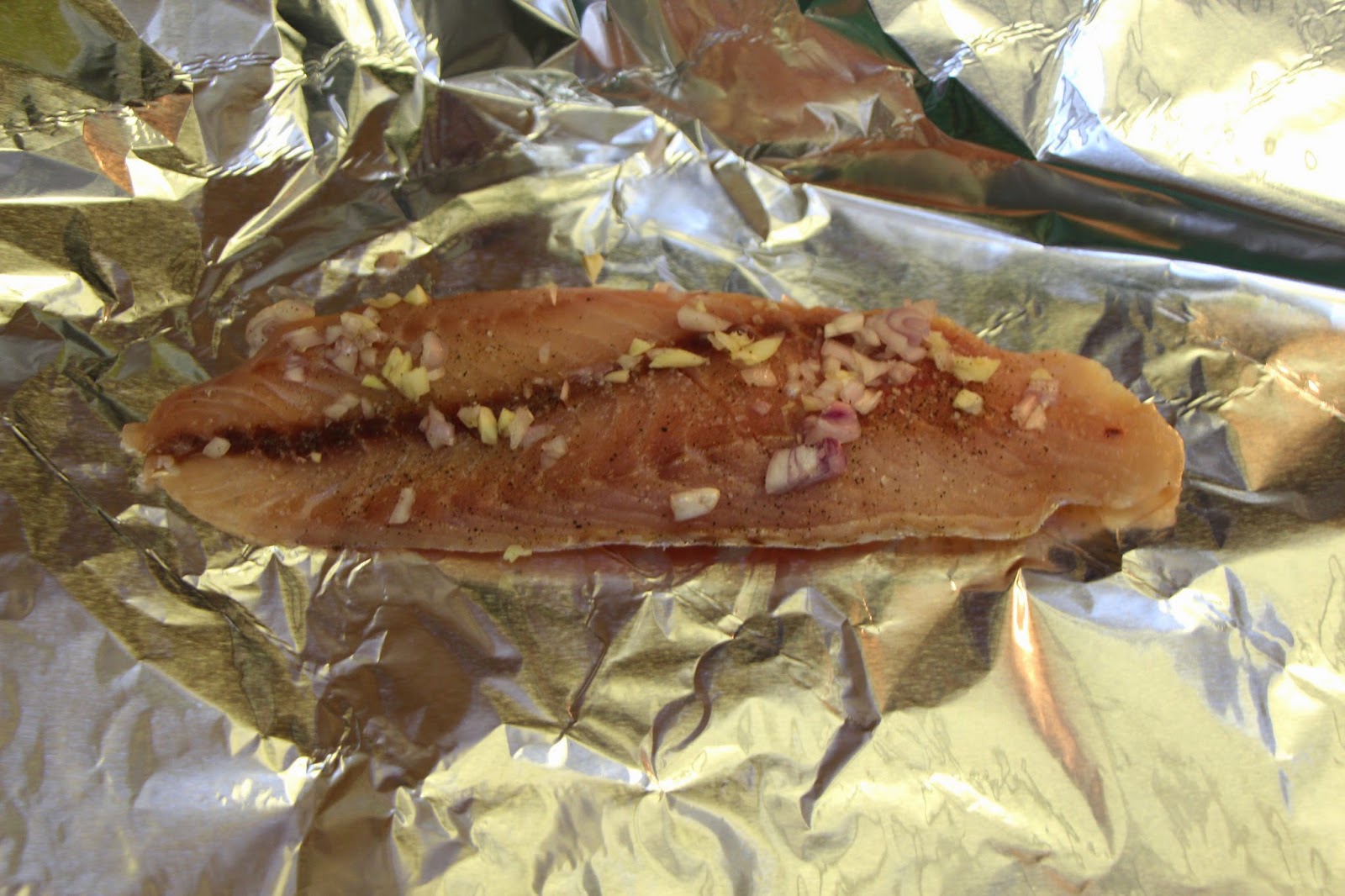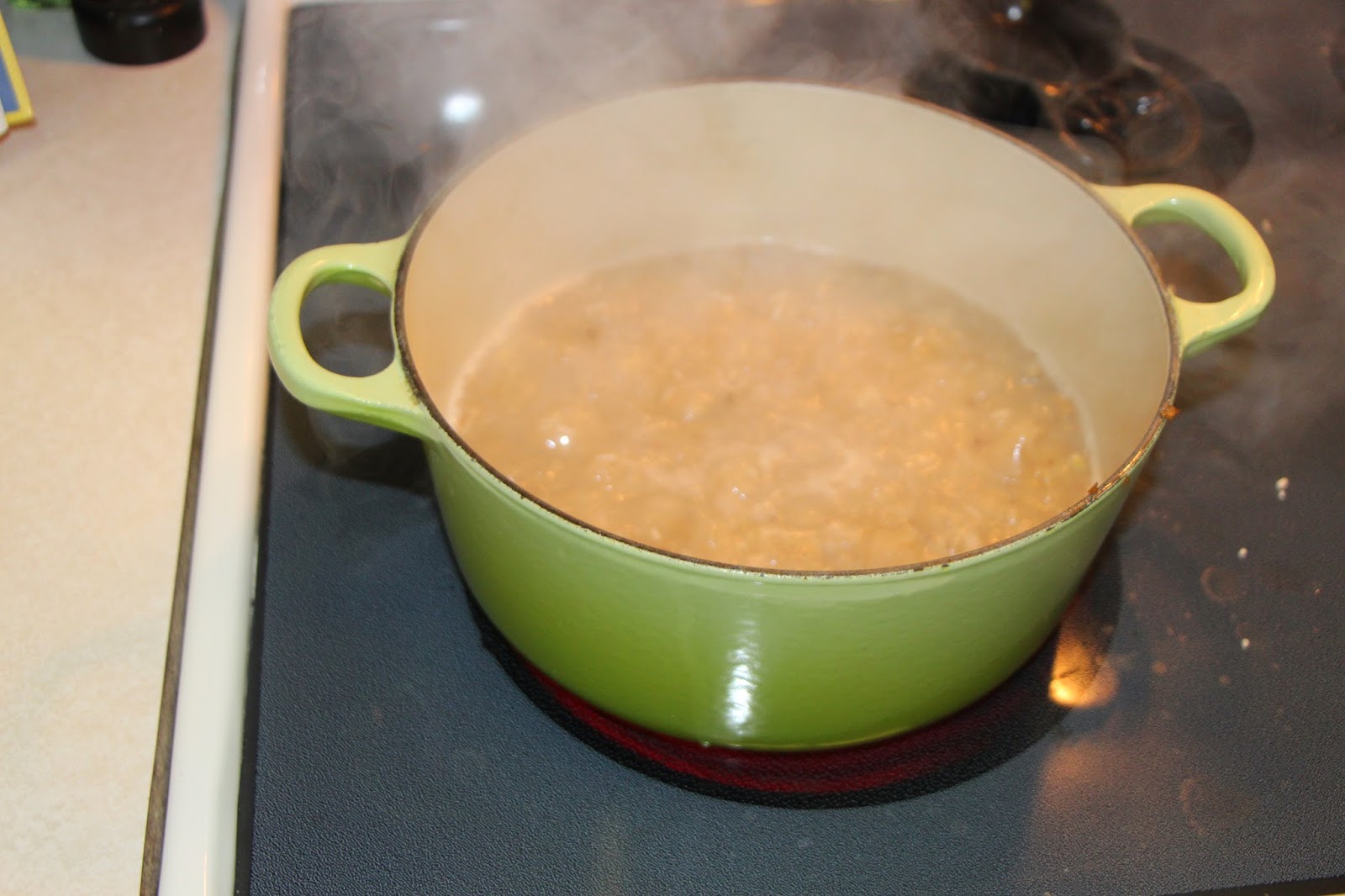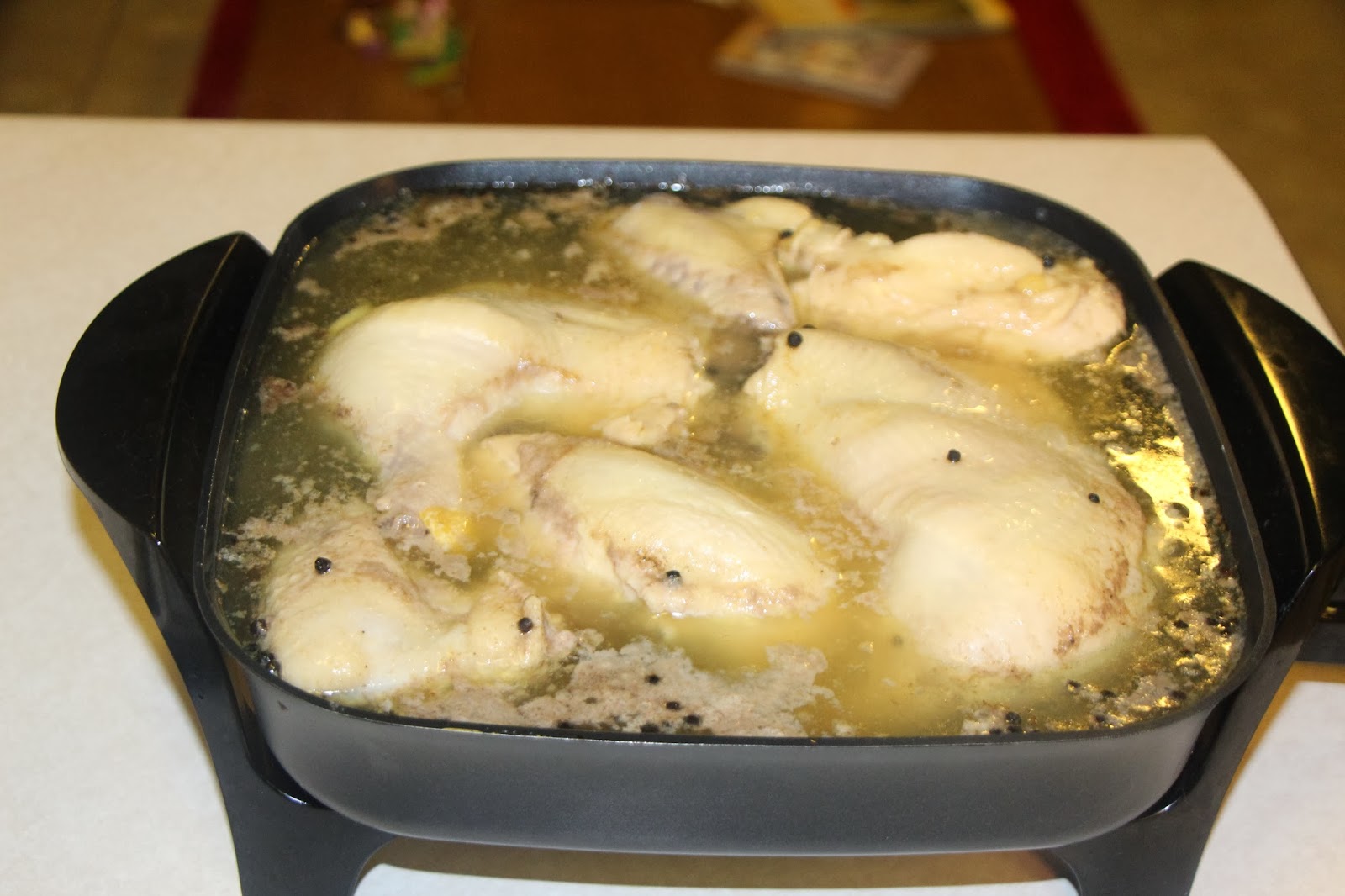Fish with a HEAD
Growing up near the ocean, I grew up seeing fish with heads at the grocery store. I remember shopping with my mom and seeing the fish with the plastic wrap on in. I would push the eyes in. I know, weird right but I did. When this recipe came up for "steaming a whole fish", I looked forward to trying this. I regularly bake or "poach" fish filets but never have cooked, prepared, deboned, or skinned a whole fish. I began looking for a whole fish.... after many attempts and trips to grocery stores, I could not find the fish with the eyes/heads like I remembered. Again, the curse of living away from the ocean. This recipe called for 1 (1 lb) whole round fish. This includes Snapper, rockfish, or sea bass. I went to the meat counter (not sure where to find fishmonger in this area) and asked for these fish. After the third attempt, they had one rockfish filet available. Oh well, my dream of a fish with a head must wait for another time.
I started by chopping garlic and shallots.
Here is my rockfish fillet. I took the fillet and cross hatched it on both sides and seasoned with salt and pepper. In the recipe, it says to do this to the skin but of course there is no skin here. :(I then rubbed the garlic and shallots into the cross hatched holes and the fillet itself and placed it into a foil pouch.
I topped it with a tarragon vinegar and wrapped it up. I warmed up about 1-2 inches of water to a boil in my stock pot and then placed the package on top of it. I then put the top on the pot and "steamed" it. Alton Brown talks about 3 different rigs to create the application of steaming. The first is to take two plates with the bottoms touching each other and place the fish on the top one. Then place this 2 plate tower into the pot of water. My plates were to big for this rig. The 2nd suggestions was to use a colander or steam basket and place the fish on that and then into the pot of boiling water. I had the same problem here as well so I went for the foil rig.
After steaming for 10 minutes.
After removing the fish, I put the juices or "jus" inside the foil package into a small sauce pan with hot oil. I added more shallots and garlic and then at the very end I added chile flakes and basil chiffonade. This would become the topping for the fish.
I only left the oil, pepper flakes and basil for about 45 seconds.
Here is the finished product. The fish had a very strong flavor and it was very oily from the sauce that I poured on top. My family was all very kind and ate it(of course not Reagan) but it did not taste good. It was a epic fail.
Overall, I think it was not the fish that was the problem but the flavoring. The shallots were very strong and too much oil in the jus sauce on top. I will stick to poaching, frying, or baking my fish like my mom taught me. I do miss the ocean and the smell of fresh fish. I still have a hard time buying "fresh" fish at the store in Arizona. Am I the only one? I will stick to frozen fish fillets and shrimp unless I am near the ocean. Maybe I was spoiled as a kid or during my recent visit to Alaska but it is just not the same. Arizona peeps? How do you cook your fish? Where do you get your fish from?

























































